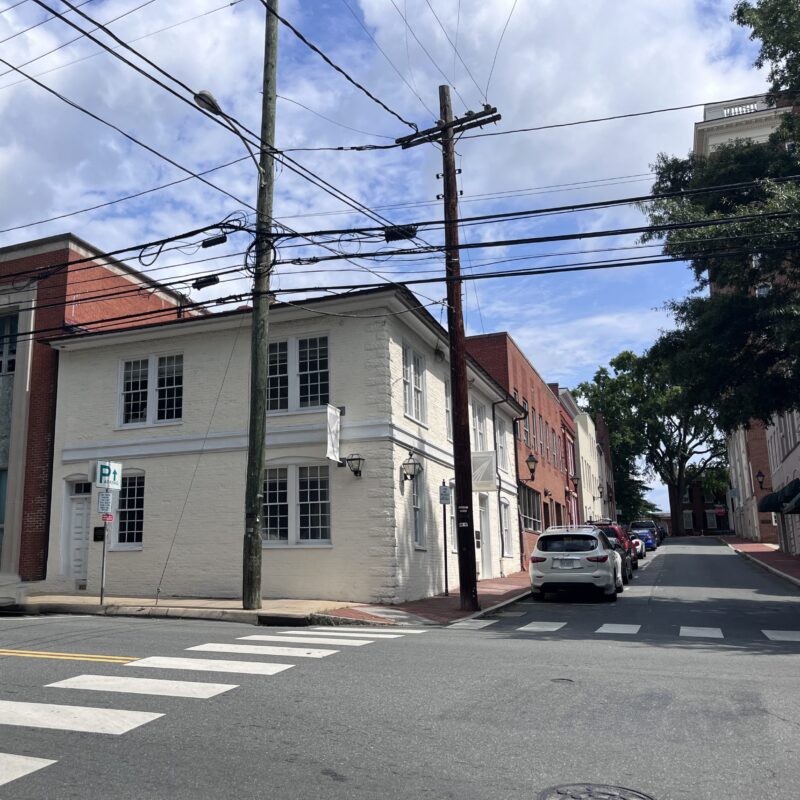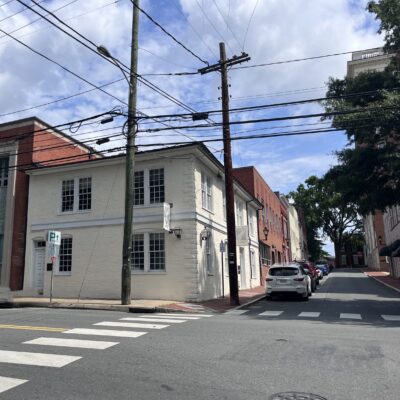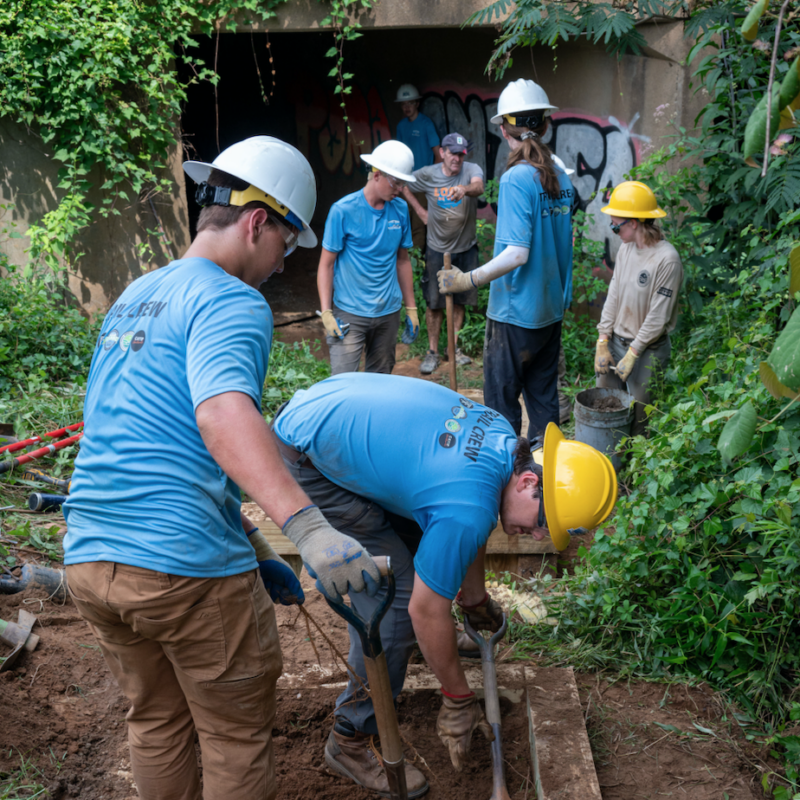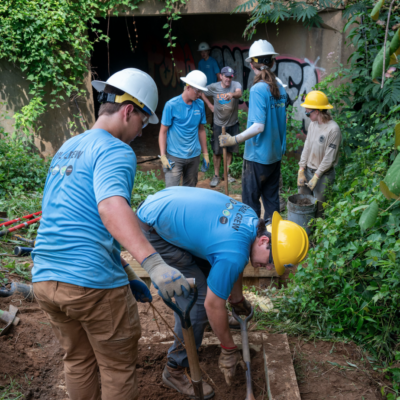The new batch of McGuffey Art Center members have put together a solid show to introduce themselves, and the artists honor the building’s roots as an elementary school, with, among others, Peter Krebs’ skyscapes presenting views you might see at recess, and Amber Zavada’s earnest earthwork constructions lining the halls.
|

“Aquarian Woman” and “Soul Travelling” attempt to deify the female body. A rope construction by Sonja Weber Gilkey.
|
For science class, Bethany Pierce’s small, luminescent paintings beautifully explore a cellular universe. “Horizon IV” is like the most exquisite cataract you’ve ever seen, a star exploding from an eye. For all the delicacy of paint, there’s still a strong painterly quality to her work. Pierce doesn’t smooth out her brush strokes, using them instead to move the viewer through the depths of her pieces. In “Umbilicus,” which draws from scientific realism, the viewers’ eye follows the strokes that create the cord-like structure, which floats along the plane of the picture as delicately as if it were in a womb.
Social studies class takes place in front of Darrell Rose’s mixed-media paintings. His bright, chaotic panels seem at first approach to be pulsatingly cheerful, but the semi-abstract figures are so distorted and bruised that we’re forced to realize an undertone of violence and disaster to the chaos. These figures dwarf the urban settings that line works like “New York, New York,” and “On the Block,” making us wonder if we should fear them or pity them. Across the hall from Rose, Dan Hildt’s mixed-media works fill the gallery air with the smell of asphalt, an element in his sculptural images. Hildt replicates moments on a road or parking lot where painters miss their mark, asphalt cracks, and leaves run into oil patches, using, it appears, the same materials. The shift from horizontal street scene to vertical wall hanging confronts notions of what makes a work of art.
In the upstairs gallery, Sonja Weber Gilkey continues to question the idea of art’s construction. Her zany rope sculptures, made from found objects and crafted ropes, draw from the craft-becomes-art tradition of feminist artists of the 1970s and retain that interest in intimidation. Oversized, strangely and deliberately figural, works like “Aquarian Woman” and “Soul Travelling” attempt to deify the female body, with a strong central axis delineating breasts, pelvis and buttocks.
On the other side of the hallway, the mixed media works of Aaron Eichorst can best be described as the after-school drama class—perhaps the best part of the day. Eichorst draws from theater, mythology, ancient architecture, psychology and a deep appreciation of both aesthetics and wit. Giant figures peek from small stages, flowers replace heads and eyes emerge from leaves. A numbered series subtitled “Grotesque” is unfairly mingled in with other works, forcing the viewer to jump around between “The Temple,” “The Shrine,” and “The Theater” in order to absorb the progression of these Italianate expositions. “The Temple” is the most frantic of the three, as Eichorst plays with color theory, linear perspective and an intimate understanding of Italian iconography. Eichorst and his fellow new members have a lot to teach us, and this exhibition should make for eager pupils.






